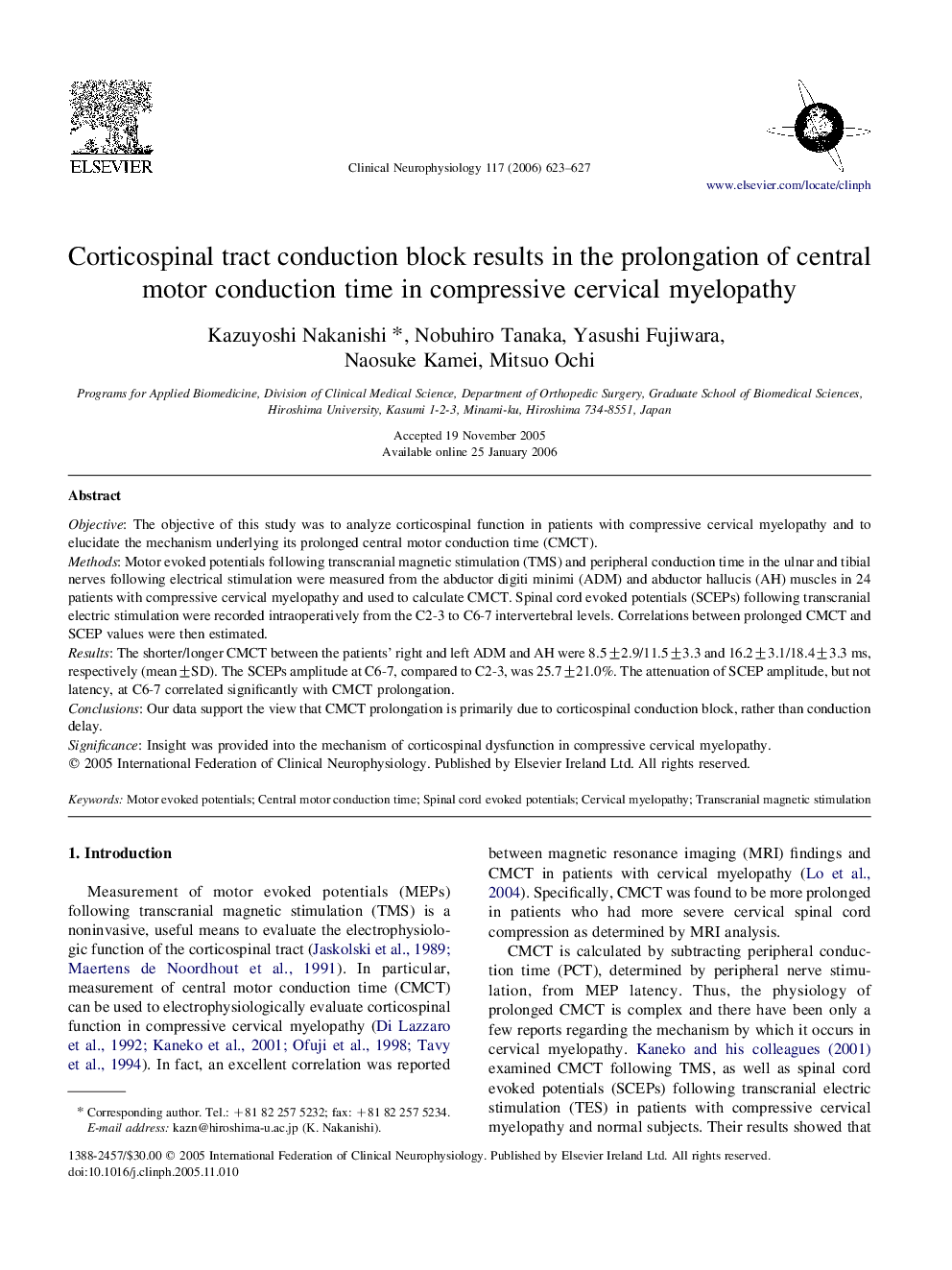| Article ID | Journal | Published Year | Pages | File Type |
|---|---|---|---|---|
| 3048432 | Clinical Neurophysiology | 2006 | 5 Pages |
ObjectiveThe objective of this study was to analyze corticospinal function in patients with compressive cervical myelopathy and to elucidate the mechanism underlying its prolonged central motor conduction time (CMCT).MethodsMotor evoked potentials following transcranial magnetic stimulation (TMS) and peripheral conduction time in the ulnar and tibial nerves following electrical stimulation were measured from the abductor digiti minimi (ADM) and abductor hallucis (AH) muscles in 24 patients with compressive cervical myelopathy and used to calculate CMCT. Spinal cord evoked potentials (SCEPs) following transcranial electric stimulation were recorded intraoperatively from the C2-3 to C6-7 intervertebral levels. Correlations between prolonged CMCT and SCEP values were then estimated.ResultsThe shorter/longer CMCT between the patients' right and left ADM and AH were 8.5±2.9/11.5±3.3 and 16.2±3.1/18.4±3.3 ms, respectively (mean±SD). The SCEPs amplitude at C6-7, compared to C2-3, was 25.7±21.0%. The attenuation of SCEP amplitude, but not latency, at C6-7 correlated significantly with CMCT prolongation.ConclusionsOur data support the view that CMCT prolongation is primarily due to corticospinal conduction block, rather than conduction delay.SignificanceInsight was provided into the mechanism of corticospinal dysfunction in compressive cervical myelopathy.
